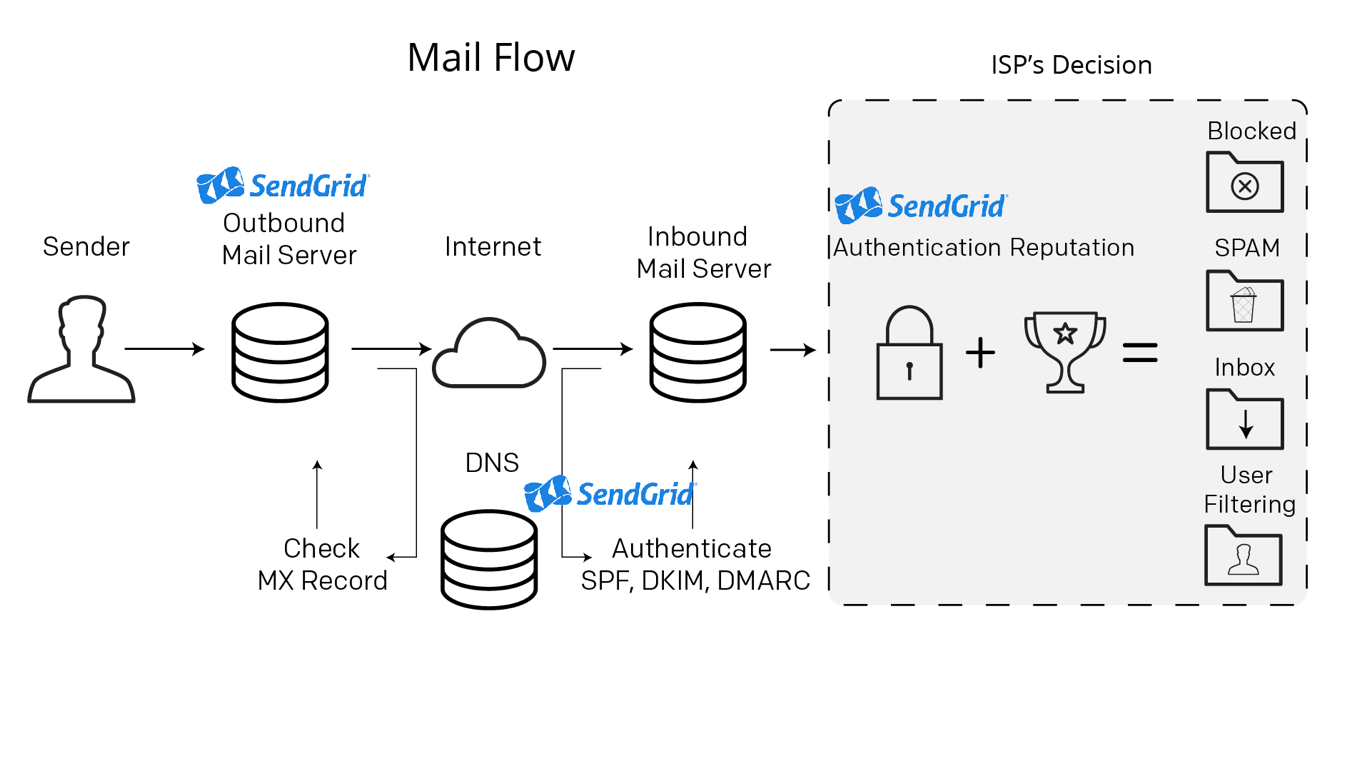Twilio and SendGrid are leaders in their infrastructure categories and certainly APIs every developer needs to know. If you’ve been around the developer community for awhile, you likely already consider these two like twins separated at birth, so maybe then it’s natural that they’re set to join forces.

Twilio (a leader in telephony APIs) recently announced its acquisition of SendGrid (email services platform), which it expects will close in 2019. Both companies are publicly traded, so these things take time. Together they represent a key expansion of Twilio’s communications platform into the tough area of email.
Email is Really Hard to Do Right
You think bringing the world’s telecommunications players under a single API is hard, try dealing with spammers. Unwanted email is the first thing many people think of when they hear about sending email at scale. What SendGrid and any reputable email provider tries to do is ensure the quality of the email they send. Just as Twilio is an API interface into a whole world of telephony, SendGrid is far beyond a simple email server most developers could build.
Think of the commercial emails you actually want to receive. Many people look forward to valuable newsletters or updates from companies they follow. Even if that’s not you, receiving an email with a download for something you just bought, a password reset message, or a receipt for a big purchase… these are all the types of email that made SendGrid’s name and created the developer-friendly transactional email category.

I worked at SendGrid (and, full disclosure, I’m still a stockholder) and saw the efforts the teams went to build a developer-friendly API, maintain the infrastructure to run at massive scale, and most of all to keep the email high quality. The compliance team had to fire customers for the greater good of the entire platform. They worked with every major email service (Gmail, Hotmail, Yahoo, etc) to create whitelists and feedback loops. If you’ve ever tried to get email delivered without the help of a provider like SendGrid, you know how hard it is.
The Mass Communications Infrastructure Pie
There are quite a few ways you can communicate with people now and APIs to control all of them. Here are some of the largest slices of the pie, along with the likely leader*.
- Voice: Twilio
- SMS: Twilio
- Email: SendGrid
- Push notifications: Urban Airship
- Voice and video chat: Tokbox (now Nexmo, a Twilio competitor)
- Text chat: no clear leader
- Voice assistant: Amazon Alexa
*Those are subjective decisions based upon my own research, but all of these categories have multiple, strong players.
Some other emerging areas of communications infrastructure are rich communications services (RCS or rich messaging) and web notifications. Others might include Slack and similar workplace communications tools. While important, those aren’t really oriented toward mass communication nor focused on developer interaction at an infrastructure level.
Nobody Can Be Great at Everything, But Twilio Looks Pretty Good
You can see that with SendGrid’s email service, Twilio is leading in several slices of the communications infrastructure pie. Twilio also dabbles in every category in some capacity, but it’s hard to really be the best in many categories on your own. The ones who try to build the Communications Everything platform from the ground up end up not excelling in any of the slices.
With its primary focus on telephony, Twilio would have a hard time building SendGrid on its own. Now that it acquired the leader, we’ll have to see if it can maintain a suite of best-in-class products. Who knows, maybe Urban Airship is next?